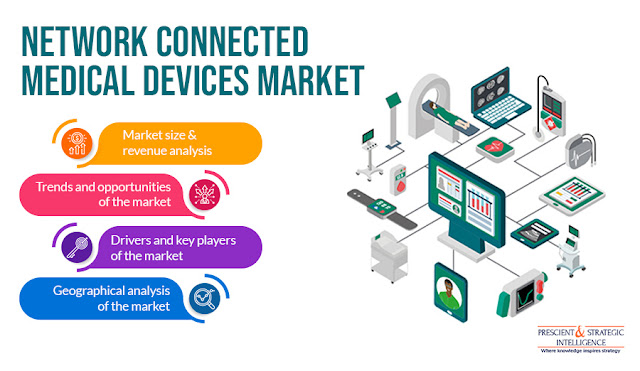The invention is a hallmark of the medical sector. This has been obvious with the addition of the Internet of Things (IoT) and healthcare. As connected technology turned out to be more intertwined in our daily lives, it only makes sense that we are experiencing a surge in health-connected devices and the development of the connected medicinal device industry. The count of connected medicinal devices in the industry is projected to surge exponentially in the coming few years as more providers are turning to connected health solutions to augment patient care.
What Are Connected Medical Devices?
Connected medical devices are medical devices that are able of connecting to the web via Bluetooth, WiFi, or radio transmission. Such medicinal devices have digital abilities beyond the basic purpose of treating, diagnosing, preventing disease or curing, permitting them to participate with, and connect to, other networks and arrangements. Some electromechanical medicinal devices such as imagery machinery, clinician-watched wearable fitness trackers, and automatic medication delivery devices are instances of connected health devices.
The Internet of Medical Things (IoMT)
To know connected medical devices, it’s vital to understand the Internet of Medical Things. Also called IoMT, the Internet of Medical Things is a connected set-up of medicinal devices, software applications, and healthcare data technology systems and facilities. The IoMT connects information (patient data or performance information), individuals, and processes with the aid of connected medicinal devices and medicinal mobile applications.
The Benefits of Connected Medical Devices
Real-Time Patient Monitoring: Connected medical devices can screen patient conditions in real-time and convey that information straight to care providers. This information tracking can happen in the infirmary or in-house healthcare situations. In infirmaries, the high count of patients means that continuous monitoring of vital data including important sign data isn’t always possible.
Smart patient monitoring systems offer nurses and surgeons updates and warnings of important patient data such as oxygen saturation and heart rate without needing them to constantly visit a patient’s room. Take-house versions of health-connected devices can screen patient indications and diagnostics while sharing that information with care workers, permitting better house monitoring and possibly lessening the requirement for follow-up visits.
More Personalized Care: With reliable and precise patient information, doctors can make better, more modified decisions regarding patient care. As doctors gain insights into patient behavior, they can track the efficiency of certain treatments and make modifications as required.
Increased Safety: Connected devices and the IoMT might make it imaginable to forecast device faults before they occur or before they reason serious opposing events. Via cloud connectivity, such devices can be surveyed more efficiently by builders and technical teams. Early notice alerts can be delivered if something might be wrong, permitting the potential issue to be confronted before it becomes a large-scale outage or takes serious systems offline.
Hence, the growing penetration of network-connected medical devices in healthcare, acceptance of progressive smartphone-based healthcare technologies, growing occurrence of chronic situations, and rising expenditure by government and private establishments, throughout the world, are the major reason propelling network-connected medical devices market.







0 Comments